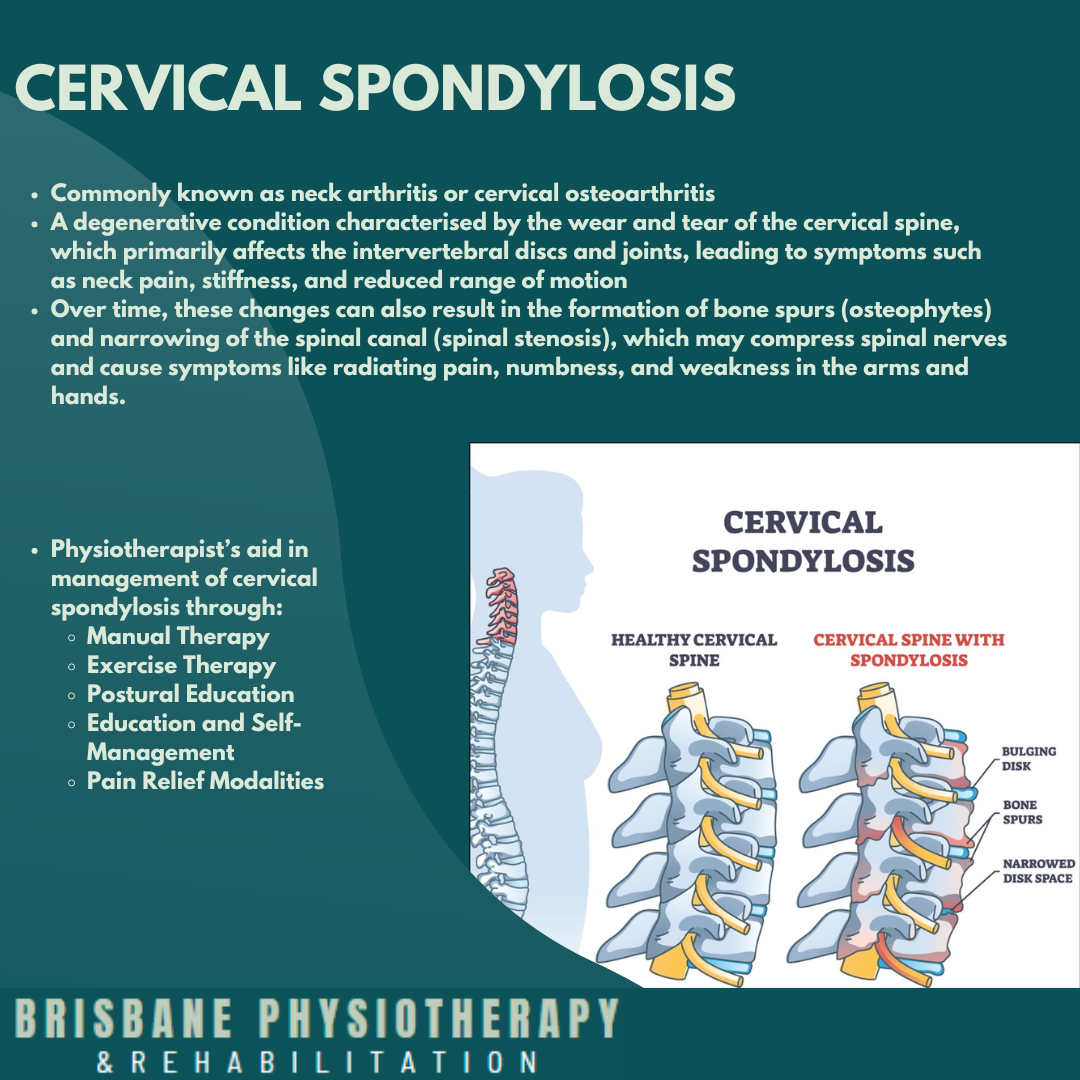What Is Cervical Spondylosis?
Introduction
Cervical spondylosis, commonly known as neck arthritis or cervical osteoarthritis, is a degenerative condition characterised by the wear and tear of the cervical spine (the neck region of the spine), which primarily affects the intervertebral discs and joints, leading to neck pain, stiffness, and reduced range of motion. Over time, these changes can also result in the formation of bone spurs (osteophytes) and narrowing of the spinal canal (spinal stenosis), which may compress spinal nerves and cause symptoms like radiating pain, numbness, and weakness in the arms and hands.
Symptoms
Cervical spondylosis can present a variety of symptoms, ranging from mild to severe. Common symptoms include:
Neck Pain: Persistent or intermittent pain in the neck, often described as aching or sharp.
Stiffness: Reduced flexibility in the neck, making it difficult to turn the head fully.
Headaches: Often starting at the base of the skull and radiating towards the forehead.
Radiating Pain: Pain that travels from the neck to the shoulders, arms, and hands, often due to nerve compression.
Numbness and Tingling: Sensations of pins and needles in the arms, hands, or fingers.
Weakness: Muscle weakness in the arms and hands, which can affect grip strength and dexterity.
Loss of Balance: In severe cases, cervical spondylosis can affect balance and coordination.
Grinding Sensation: A feeling or sound of grinding when turning the neck, caused by bone spurs or rough joint surfaces.
Causes of Cervical Spondylosis
Cervical spondylosis is primarily caused by age-related changes in the cervical spine, but several factors can contribute to its development:
Degenerative Disc Disease: With age, the intervertebral discs lose hydration and elasticity, leading to disc shrinkage and decreased cushioning between vertebrae.
Bone Spurs (Osteophytes): As the discs deteriorate, the body may produce extra bone to strengthen the spine. These bone spurs can press on nerves, causing pain and other symptoms.
Herniated Discs: The discs may protrude and press on spinal nerves.
Ligament Stiffness: Ligaments in the neck can become stiffer with age, reducing neck flexibility and contributing to pain.
Injury: Previous neck injuries can predispose individuals to spondylosis.
Occupation: Jobs that involve repetitive neck movements, heavy lifting, or prolonged periods of sitting (especially with poor posture) can accelerate wear and tear on the cervical spine.
Genetics: A family history of neck pain or arthritis can increase the likelihood of developing cervical spondylosis.
Management
Physiotherapy plays a crucial role in managing cervical spondylosis. A physiotherapist can help alleviate pain, improve mobility, and enhance the overall function of the neck and surrounding areas through a variety of treatments and exercises. Here are some common physiotherapy interventions for cervical spondylosis:
Manual Therapy: This includes techniques such as mobilisation and manipulation of the cervical spine to reduce pain and improve movement. Manual therapy helps in loosening tight muscles, improve joint function, and relieving nerve compression.
Exercise Therapy: Tailored exercise programs are designed to strengthen the neck and shoulder muscles, improve posture, and enhance flexibility. Exercises may include stretches, and strengthening routines that target specific muscle groups.
Postural Education: Physiotherapists provide guidance on maintaining proper posture during daily activities to reduce strain on the cervical spine. This includes ergonomic advice for workstations, sleeping positions, and general body mechanics.
Education and Self-Management: Physiotherapists educate patients on self-management strategies, including home exercise programs and lifestyle modifications, to help manage symptoms and prevent further deterioration.
Pain Relief Modalities: Physiotherapists can advise regarding techniques such as heat and cold therapy, and how they can be used to manage pain and inflammation.
By addressing the root causes of pain and dysfunction, physiotherapy can significantly improve the quality of life for individuals with cervical spondylosis.
